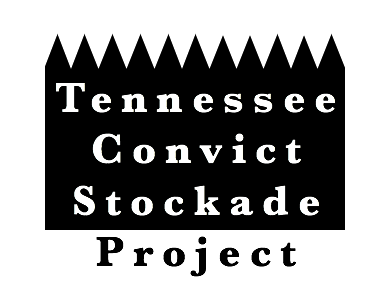
The Lone Rock Stockade Archaeology Project
The Lone Rock Stockade was the centerpiece of Tennessee’s convict leasing landscape. We’ve been excavating it since 2020 to learn about conditions inside the prison.
A Landscape of Forced Labor
Tennessee Coal, Iron, and Railroad Company, the owner of the Lone Rock Stockade, managed an interconnected set of mines, coke ovens, blast furnaces, and land in the southern Middle Tennessee region. Forced labor was integral to the smooth operation of the landscape. Prisoners in Tracy City and Inman mined coal and iron ore, respectively, to supply blast furnaces in South Pittsburg and Cowan. Coal was turned into coke by prisoners in Tracy City. Other prison stockades are not marked on this map, including one at Battle Creek and along the railroad lines that crisscrossed this landscape.
5,000 Names
Archival research has documented the names of 5,000 men, women, and children to were sent to Tracy City to do forced labor for the Tennessee Coal, Iron, and Railroad Company. Many of these individuals were imprisoned in the original stockade (1871-1884) while the majority were imprisoned in the Lone Rock Stockade (1884-1896). The document reveal children as young as 8 and men as old as 70 were imprisoned here. Approximately 10% of the prisoners sent to Tracy City died during their prison sentence. We are still looking for their remains.
Over 17,000 Artifacts
Our excavations at the Lone Rock Stockade’s hospital, barracks, and wash room structures have yielded over 17,000 artifacts. Each of those artifacts tells a story about the complex relationships between prisoners, prison guards, and the local population. The Lone Rock Stockade was recently selected to be added to the Digital Archaeological Archive of Comparative Slavery, which will provide professional and avocational archaeologists around the globe with access to our artifactual data. Visit our Press & Publications page to learn more about how we are interpreting these objects through the lens of enslavement, racism, and control.
Cutting Edge Technologies
In addition to archaeological excavations and archival research, we are employing cutting edge technologies in our attempts to understand the valley’s landscape as a whole. Researchers from the Center for Advanced Spatial Technologies at the University of Arkansas visited the site in 2022 and collected this high definition LiDAR (Light Detection and Ranging) data of the ground surface beneath the trees. What do you see in this image?
You can follow our progress and check out our previous work on our Facebook page, the Lone Rock Convict Stockade Project.




